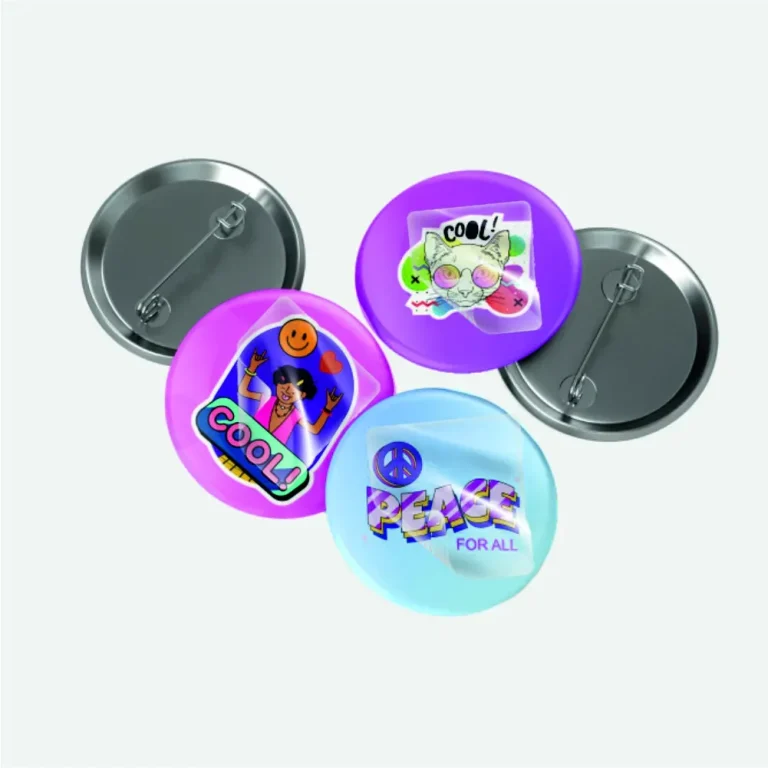The UV DTF Gangsheet Builder is revolutionizing the landscape of modern printing technology, allowing users to create stunning visuals with enhanced efficiency. This innovative tool is essential for anyone looking to explore the exciting realm of UV DTF printing, where high-quality prints can be effortlessly produced for various surfaces. With a focus on gangsheet layout optimization, users can maximize material utilization and reduce waste while achieving intricate designs. By leveraging expert UV printing tips, the Gangsheet Builder empowers both hobbyists and professionals to produce vibrantly colored prints that last. Whether for custom merchandise or artistic projects, the potential of the UV DTF Gangsheet Builder is limited only by the imagination.
Introducing the UV DTF Gangsheet Creator, a groundbreaking solution for enthusiasts engaged in direct-to-film printing. This tool is tailored for crafting exceptional layouts that cater to the needs of diverse substrates, while ensuring optimal ink performance and vibrant output. By focusing on the gangsheet format, creators can efficiently arrange their prints to minimize material waste and enhance design complexity. Whether you call it film printing or UV transfer technology, mastering the layout and setup process is key to delivering high-quality prints that stand the test of time. Explore the world of advanced printing techniques and unlock your creative potential with the innovative features of the UV DTF Gangsheet Creator.
Understanding the Benefits of UV DTF Printing
UV DTF printing technology stands at the forefront of modern printing practices, offering distinct advantages over traditional methods. Its ability to print vibrant designs with exceptional detail on diverse materials such as fabric, metal, and plastic showcases its versatility. Users can achieve stunning color vibrancy and durability, making UV DTF a preferred choice for both custom merchandise and artistic applications. By utilizing a UV DTF Gangsheet Builder, printing enthusiasts can streamline the process and enhance their creative projects while ensuring high-quality outputs.
Another significant benefit is the longevity of prints produced through UV DTF methods. Unlike conventional prints that may fade or wear over time, UV DTF prints maintain their vibrant colors and intricate details even under varying environmental conditions. This durability makes them suitable for a wide range of applications, from clothing and accessories to promotional materials. Investing in UV DTF printing technology means embracing a future where creativity meets resilience in every project.
Maximizing Your Gangsheet Layout for Efficiency
The layout of your gangsheet is critical in determining the efficiency and cost-effectiveness of your UV DTF printing. By carefully arranging your designs, you can minimize waste and maximize the use of film. A well-planned gangsheet layout not only enhances the aesthetics of your final product but also influences production time and material costs. Utilizing software designed for layout optimization ensures that you are making the most out of each sheet, allowing for multiple designs to exist harmoniously without compromising print quality.
When optimizing your gangsheet layout, consider the spacing and alignment of each graphic or text element. Adequate spacing can prevent cutting issues, ensuring that each design transfers accurately onto the designated surfaces. Furthermore, maintaining a logical alignment across the sheet will streamline the printing process and reduce the likelihood of errors. Engaging in best practices for gangsheet layout is essential for achieving high-quality results in UV DTF printing.
Essential Print Settings for Superior Quality
Fine-tuning print settings is a key component in achieving superior results with UV DTF printing. DPI, or dots per inch, is one of the most significant settings that directly impacts the detail of your print. Higher DPI settings are crucial for intricate designs that require precision, while simpler graphics may suffice with lower settings. Regular calibrations and adjustments based on the specifics of your materials will ensure that each print maintains a high standard of quality, ultimately leading to satisfied customers and successful projects.
In addition to DPI, consider other parameters like ink flow, color profiles, and curing times. Each of these factors plays a vital role in the cohesiveness of the print results. For instance, ensuring that colors are accurately represented through the right profiles will help prevent discrepancies between digital designs and the final printed output. By understanding and adjusting these settings, you can elevate your UV DTF printing to new levels of professionalism and efficiency.
Testing and Quality Assurance in Printing
Testing before embarking on full runs is an essential practice that can save time, resources, and frustration in UV DTF printing. By conducting test prints on smaller sheets, you can assess color accuracy, alignment, and overall print quality. This preliminary step allows for necessary adjustments to be made, ensuring that your final prints meet expectations without compromising material use. The insights garnered from small-scale tests can lead to greater confidence and consistency in production.
Quality assurance doesn’t end with just testing; it is an ongoing commitment throughout the printing process. Implementing a system for continuous monitoring will help catch any issues before they escalate into larger problems. This might include regularly inspecting printed samples and documenting any inconsistencies. By valuing quality assurance within your printing workflow, you create a reliable system that enhances the overall output and customer satisfaction.
Choosing the Right Inks for Optimal Results
The type of inks used in UV DTF printing is pivotal to achieving vibrant and long-lasting prints. Selecting inks that are specifically formulated for your printer model can significantly boost adhesion and color fidelity. Many manufacturers provide inks designed to cater specifically to the needs of UV DTF processes, ensuring that color reproduction is not only accurate but also resilient against fading and wear.
Utilizing the right inks is more than just a recommendation—it’s a necessity for those aiming for exceptional print quality. High-quality inks contribute to a smoother application and a more refined finish on various substrates, leading to results that stand out in the marketplace. Investing in appropriate inks will ultimately enhance the durability and aesthetic appeal of your UV DTF prints, giving you a competitive edge in the industry.
Engaging with the UV DTF Printing Community
Building connections within the UV DTF printing community can greatly enhance both your knowledge and your skills. Many seasoned printers are willing to share tips, resources, and personal experiences that can help newcomers navigate the intricacies of this technology. Online forums and social media groups serve as fantastic platforms for discussion, allowing users to troubleshoot common challenges and gain insights into best practices.
Networking with other UV DTF enthusiasts fosters an environment of collaboration and continuous learning. It enables you to explore new techniques and gain fresh perspectives on various aspects of the printing process. Engaging with the community not only keeps you informed about the latest advancements in UV DTF printing but also inspires creativity through shared experiences and ideas.
Frequently Asked Questions
What is the UV DTF Gangsheet Builder and how does it work?
The UV DTF Gangsheet Builder is a specialized tool for arranging designs for UV DTF printing, enabling users to efficiently layout multiple graphics on a single film sheet. This method optimizes material usage while enhancing the print quality by allowing intricate and colorful designs to be transferred seamlessly onto various substrates.
How can I ensure high-quality prints using the UV DTF Gangsheet Builder?
To achieve high-quality prints with the UV DTF Gangsheet Builder, start with high-resolution vector images to avoid pixelation, optimize your gangsheet layout for efficient use of space, and adjust printer settings such as DPI for maximum detail. Additionally, use recommended inks to enhance color vibrancy and adhesion.
What are some best practices for gangsheet layout in UV DTF printing?
For effective gangsheet layout in UV DTF printing, incorporate efficient spacing and alignment of designs, utilize layout design software for visualization, and perform test prints to check for color accuracy and alignment. This approach minimizes waste and ensures precise and high-quality results.
Why is it important to test prints before a full run in UV DTF printing?
Conducting test prints before a full run is critical in UV DTF printing to assess color accuracy, alignment, and overall quality, reducing material waste and allowing for necessary adjustments to be made. This step helps ensure that the final production meets your high-quality print standards.
What types of inks should I use for UV DTF printing?
For optimal results in UV DTF printing, always use inks that are specifically formulated for your printer model. Recommended inks enhance color reproduction and improve adhesion to fabrics, ultimately resulting in longer-lasting and more vibrant prints.
How do I maintain my UV DTF printing equipment for the best performance?
To maintain your UV DTF printing equipment effectively, regularly clean ink heads to prevent clogs and inspect software for updates. Consistent maintenance ensures longevity in your equipment and reliable printing performance, which enhances the quality of your prints.
| Key Points | Description |
|---|---|
| Understanding UV DTF Technology | UV DTF printing allows intricate designs to be transferred onto various materials, offering flexibility and high-quality outcomes. |
| 1. Use High-Quality Designs | Start with high-resolution images and prefer vector files for sharp and vibrant prints. |
| 2. Optimize Your Layout | Efficient arrangement within gangsheet saves material and enhances precision in transfers. |
| 3. Adjust Print Settings | Ensure printer settings match your materials, focusing on the appropriate DPI for detailed prints. |
| 4. Test Before Full Runs | Conduct test prints to check accuracy and quality to minimize waste before mass production. |
| 5. Utilize the Right Inks | Select recommended inks for better adhesion and color reproduction, ensuring long-lasting prints. |
| Maintenance of Equipment | Regular cleaning of ink heads and updating software is essential for consistent performance. |
| Community Resources | Engaging with online communities provides shared experiences and insights into techniques and troubleshooting. |
Summary
The UV DTF Gangsheet Builder is a powerful tool that enables users to create high-quality prints on a variety of substrates. By understanding the intricacies of UV DTF technology and following best practices such as using high-quality designs and optimizing layouts, users can maximize their print quality and efficiency. Regular maintenance of the equipment and active participation in community forums can also enhance proficiency in UV DTF printing. Embracing these strategies ensures that your prints stand out in both creativity and longevity, making the UV DTF Gangsheet Builder an indispensable asset in your printing toolkit.


